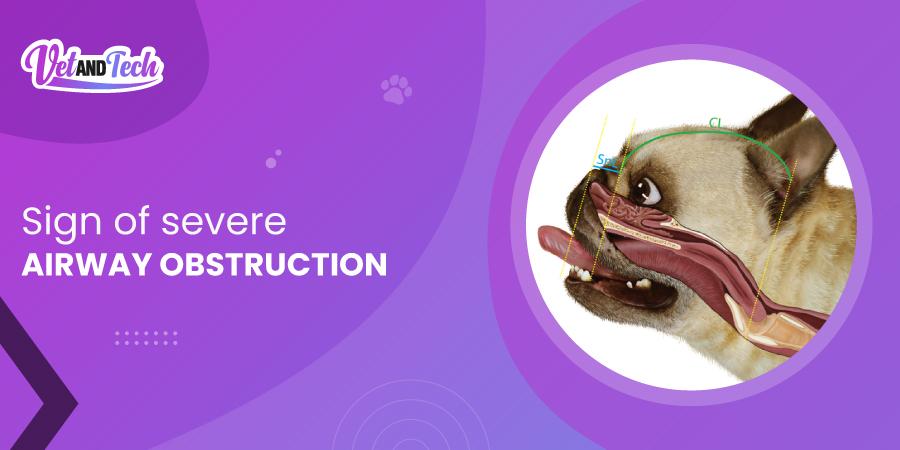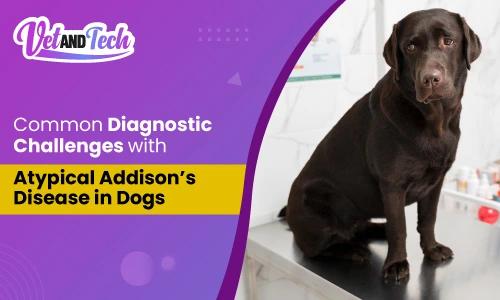What Is a Sign of Severe Airway Obstruction in Dogs
Dogs with upper airway conditions require proper diagnosis and treatment.
Most of them are in critical condition as the chronic disease progresses to an acute stage.
Chronic conditions that typically develop because of breeding predispositions or infectious agents in dogs include laryngeal paralysis, collapsing trachea, and brachycephalic airway syndrome.
This blog post will explore the key indicators of severe airway obstruction and review brachycephalic obstructive airway syndrome (BOAS).
Additionally, you will learn about the upcoming DVM Central Expo - August Edition.
Understand Airway Obstruction in Dogs
So, what is a sign of severe airway obstruction?
Airway obstruction in dogs is a disease that affects the respiratory system by narrowing or blocking the airways. It occurs when the nasal passages, pharynx, larynx, and windpipe (trachea) are blocked. This occlusion is a significant threat to health since it hinders oxygen from entering the lungs.
There are two main types of airway obstruction:
-
Upper airway obstruction
This obstruction occurs within the area's vocal tract, beginning from the nose through the mouth to the vocal cords.
-
Lower airway obstruction
Obstructions occur in the lower respiratory tract, in the trachea or bronchi, and in the tubes that stem from the trachea and subdivide into branches leading to the lungs.
Causes of airway obstruction:
- Inflammation due to infections or allergies
- Foreign objects (such as toys and bones) stuck in the airway
- Tumors or growths obstructing the airway
- Anatomical abnormalities, particularly in brachycephalic breeds
Key Signs That a Dog Has a Severe Airway Obstruction
Knowing the signs of a serious lung blockage can save a dog’s life.
These are the main signs that a dog may be having a serious breathing obstruction:
Dyspnea (difficulty breathing)
- Rapid, shallow breathing or breathing with a stretched neck and an open mouth
- Loud breathing or stridor sounds when they breathe in and out
Cyanosis
- Your dog's cheeks and mouth will be blank or pale because they aren't getting enough oxygen
- This is a clear sign of not getting enough air and needs quick help
Coughing or choking
- Coughing or choking that won't go away, especially if it worsens when they're excited or working out.
- These signs could mean that there is a partial blockage that could get worse and become a full obstruction.
Passing Out or Collapsing (Syncope)
- Passing out or collapsing episodes often brought on by stress, energy, or physical exercise
- This means the animal's breathing is severely compromised and needs immediate medical care
Too much drooling (hypersalivation)
- Increased drooling because of trouble eating and breathing normally
- In the worst cases, this can be followed by foaming at the mouth
Nasal bleeds or discharge
- Nasal discharge that could be clear, red, or pus-filled
- Common factors such as Injuries, infections, or problems with the body's structure
Brachycephalic Obstructive Airway Syndrome (BOAS)
Animals suffering from clinically significant BOAS can struggle to breathe during exercise and may collapse due to a lack of air.
Dogs' reliance on panting to cool themselves also makes them susceptible to overheating and developing potentially serious breathing difficulties in hot conditions.
Dog Breeds
- English Bulldog
- French Bulldog
- Dogue de Bordeaux
- Boxer
- Pug
- Cavalier King Charles Spaniel
- Lhasa Apso
- Shih Tsu
- Pekingese
- Other brachycephalic breeds
Stenotic Nares
Stenotic nares are narrowed nostrils that can lead to a pinched appearance. They are considered one of the most common traits in animals with brachycephalic airway syndrome, with a prevalence rate of 17% to 77%. This narrowing increases airflow resistance up to 16 times that of an animal with normal nares.
Elongated Soft Palate
Because of the airflow resistance, it is thought that an elongated soft palate may be a secondary rather than primary condition. Elongated soft palate is common and varies in severity. This condition is observed in dogs with brachycephalic airway syndrome in approximately 62% to 100%. The soft palate is considered to be elongated when it extends past the tip of the epiglottis. The soft palate often extends far beyond the epiglottis in these dogs, causing a partial or even a complete airway obstruction, which can lead to an emergent crisis.
Everted Laryngeal Saccules
The chronic airflow resistance and increased negative inspiratory pressure result in the upper airway being sucked in, leading to other conditions such as everted laryngeal saccules and tonsils; epiglottal and soft palate swelling; and even tracheal, laryngeal, and bronchial collapse.
Hypoplastic Trachea
Hypoplastic trachea, or a narrowed or smaller-than-expected trachea, is less common in dogs with brachycephalic airway syndrome; the occurrence is approximately 13%. English bulldogs are majorly affected by the disease.
Due to difficulties from the aforementioned clinical indications, animals with brachycephalic airway syndrome are frequently seen in an emergency.
Patients with BOAS require more time to recuperate after anesthesia. They need to stay in the incubator longer and shouldn't be taken out of it until they are completely conscious and can manage their airway.
Managing Severe Airway Obstruction
Immediate intervention is crucial for dogs exhibiting signs of severe Brachycephalic airway obstruction.
Here are some essential steps;
- Stay Calm and Keep the Dog Calm
- Minimize stress and anxiety to prevent exacerbating the condition.
- Emergency Veterinary Care
- Seek immediate veterinary attention for oxygen therapy, sedation, and possible intubation or tracheostomy.
- Surgical Intervention
- In cases of BOAS, surgical correction of anatomical abnormalities may be necessary. Procedures such as widening the nostrils, resecting the elongated soft palate, and removing everted saccules can significantly improve airflow.
- Post-Operative Care
- Monitor the dog closely for complications such as swelling, infection, or respiratory distress.
- Ensure a calm and stress-free recovery environment.
DVM Central Expo - August Edition!
Improve your professional skills and veterinary knowledge by joining the upcoming DVM Central Expo - August Edition, scheduled for August 15, 2024, at 2:00 PM (US Eastern Time).
This grand event offers a chance to earn 2 free CE 2 RACE-approved CE credits and features two engaging webinars sponsored by GerVetUSA.
Speaker: Dr. Bryden J. Stanley (BVMS, MANZCVS, MS, MRCVS, DACVS)
Event Highlights:
- Webinar 1: Assessment of Airway Problems in Brachycephalics
- Gain a thorough understanding of the anatomy and function of the pharyngeal chiasma and upper airway
- Learn how to perform a comprehensive upper airway examination and record findings systematically
- Explore appropriate imaging techniques for characterizing airway issues in brachycephalic dog breeds
- Webinar 2: Procedures for Airway Problems in Brachycephalic Breeds
- Learn surgical methods for treating various airway issues in brachycephalic breeds
- Know about optimal pre-, intra-, and post-operative care
Join us for this informative and engaging event to enhance your knowledge and skills in managing airway problems in dogs, particularly brachycephalic breeds.
Plus, engage in live Q and A sessions and product demonstrations from top vet vendors.
To Sum Up!
By understanding what is a sign of severe airway obstruction and implementing best practices in veterinary care, you can provide the highest level of care for your canine patients and ensure the growth and success of your veterinary practice.
Furthermore, if you are interested in free veterinary education or a source of helpful resources or want to read the latest news from the industry, join the Vet and Tech platform.
We host free veterinary webinars led by expert speakers, where you can earn free RACE-approved CE credits here.
FAQs
What is a sign of severe airway obstruction?
Dogs with serious airway blockage often have trouble breathing, coughing all the time, cyanosis, collapsing, excessive drooling, and nasal discharge. These signs must be treated right away by a veterinarian.
What kinds of dogs are likely to get BOAS?
Brachycephalic breeds, like Bulldogs, Pugs, and Boxers, are more likely to get BOAS because their heads are short and their lungs are small, which can cause several structural problems that make it hard for them to breathe.
How can I grow my veterinary practice?
Successfully running and expanding a practice requires effectively seeking essential skills and problem-solving that furry friends tease very badly. You may buy quality veterinary surgical instruments that smooth complex procedures and ensure quick patient recovery with minimal damage. Also, you should attend veterinary expos and conferences.










